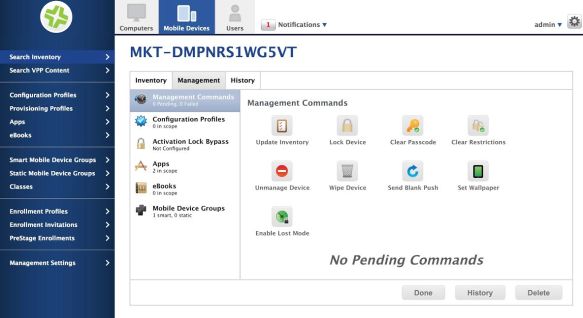Apple device management specialist JAMF Software recently announced the release of Casper Suite 9.9, a version that boasts compatibility with iOS 9.3 in addition to new functionality that enhances the ability of organizations to manage large fleets of Apple devices. Casper Suite 9.9 empowers organizations to disable, locate and recover lost or stolen devices. In addition, this release allows organizations to deliver a unified home screen for all users within an organization that standardizes the user experience by customizing which apps are available to users upon log-on. While Casper Suite 9.9 has the ability to standardize device experiences, it also allows organizations to personalize devices to ensure that users receive apps that are appropriate for their functional role and interests. In the case of students, for example, schools and educators can use Casper Suite 9.9 to customize the delivery of apps that correspond to the aptitude and academic interests of students. Candace Salmon-Hosey, Executive Director of Technology and CTE Services, Rowan-Salisbury School System, remarked on the value of JAMF software as follows:
Rowan-Salisbury School System depends on JAMF Software to provide critical, same-day support for iOS releases that impact our district’s 30,000 devices. This is one of the many reasons we partner with JAMF. JAMF’s same-day support, ubiquitous ecosystem, and architecture offers us peace of mind that our teaching and learning environment will not be disrupted when a new iOS version is released.
Here, Salmon-Hosey remarks on JAMF Software’s ability to deliver “same-day support for iOS releases” such as iOS 9.3 on a scale of 30,000 devices. The screenshot below illustrates the management functionality of JAMF’s Casper Suite platform that streamlines and simplifies the management of Apple devices within an organization, at scale:

The graphic illustrates Casper Suite’s ability to allow organizations to create mobile device groups that subsequently facilitate device standardization or personalization, as required by the customer. In addition, the screenshot shows the ease with which organizations can use the platform to locate and recover lost or stolen devices. With its enhanced support for device standardization, personalized learning, ability to locate and disable lost or stolen devices, in addition to its support for iOS 9.3, JAMF continues to consolidate its leadership position in the Apple device management space. Expect JAMF’s positioning within the Apple Device Management to grow stronger as Apple devices become increasingly pervasive within K-12 education and subsequently stand to benefit from JAMF Software’s capability to deliver standardized, yet customized curricula that give teachers enhanced control over the pedagogical experience.

You must be logged in to post a comment.